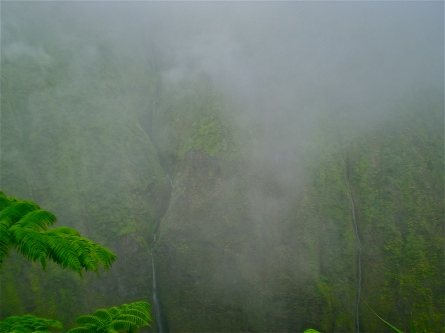
If a person were to walk east from Pololu, he would eventually reach Waipiʻo Valley in the district of Hamakua. Visitors may visit Waipiʻo by car, inching down a treacherously winding and narrow road that seems made to discourage any outsiders from coming into the valley. Many Hawaiians still live in Waipiʻo, unlike Pololu and Honokāne. The trail from Pololu soon disappears in heavy brush, what was left of the overgrown trails made by the workers on the Kohala Ditch finally swept away for good by the earthquake of 2006. A friend who knows the valleys well sometimes walks to a small cabin built in the mountains for the men who once worked on the ditch, a climb that takes ten hours, although, he says, it is faster coming out. Recently he gave me a cutting of the rare mountain rose, lokelani, that grows deep in the valley, where, he said, it was not doing very well. Too many wild pigs, and too much guava.
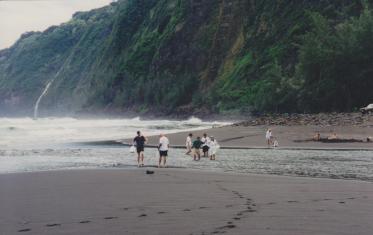
The historian John Papa I’i described a trip Kaʻahumanu made by sea to Waipiʻo:
Ka’ahumanu’s circuits of the land were always by canoe, for she had learned all about canoeing and surfing from Kamehameha, her cousin, lord, and husband . . . She boarded a canoe and sailed to Waipio, while the king and chiefs traveled over land. When the canoes arrived . . . the waves were very rough, and there was no place to land. Therefore, Ka’ahumanu ordered the paddlers to go out and come in a second time. This time they were close to the back of a wave that rose up directly in front of them, and she encouraged her paddlers to head for it. The canoe came up very close to it and as the wave rose up to a peak and spread out, the craft rode in with the foam to where the prows could be caught by the men on shore. Those on shore remarked to each other how cleverly they were saved, and this became a great topic of conversation.
Sometime in the year 1780, a lack of food thanks to the provisioning of Cookʻs ships led King Kalaniōpu’u of Hawaiʻi Island to move his court from Kailua to Waipiʻo Valley, where he called a council of chiefs. Limbs shaking from a lifetime of drinking ʻawa, Kalaniopu’u formally declared his oldest son, Kiwala’o, heir to the kingdom, and named Kamehameha high chief of Kohala, giving him land that already belonged to Kamehameha by inheritance. More important, however, he bequeathed to Kamehameha the guardianship of the feathered war god, Kūka’ilimoku, whose name means The Island Snatcher, and the attendant responsibility of conducting rites and tending the god’s heiau. Kalaniōpuʻuʻs gift gave to Kamehameha a significant political and religious advantage over other high chiefs. The war god—a wickerwork head five feet tall, to which thousands of small red, yellow, and black feathers had been painstakingly attached, its gaping mouth lined with dogsʻ teeth—was carried into battle by a special priest, and the terrifying screams that poured from its mouth were said to be the cries of the god himself.
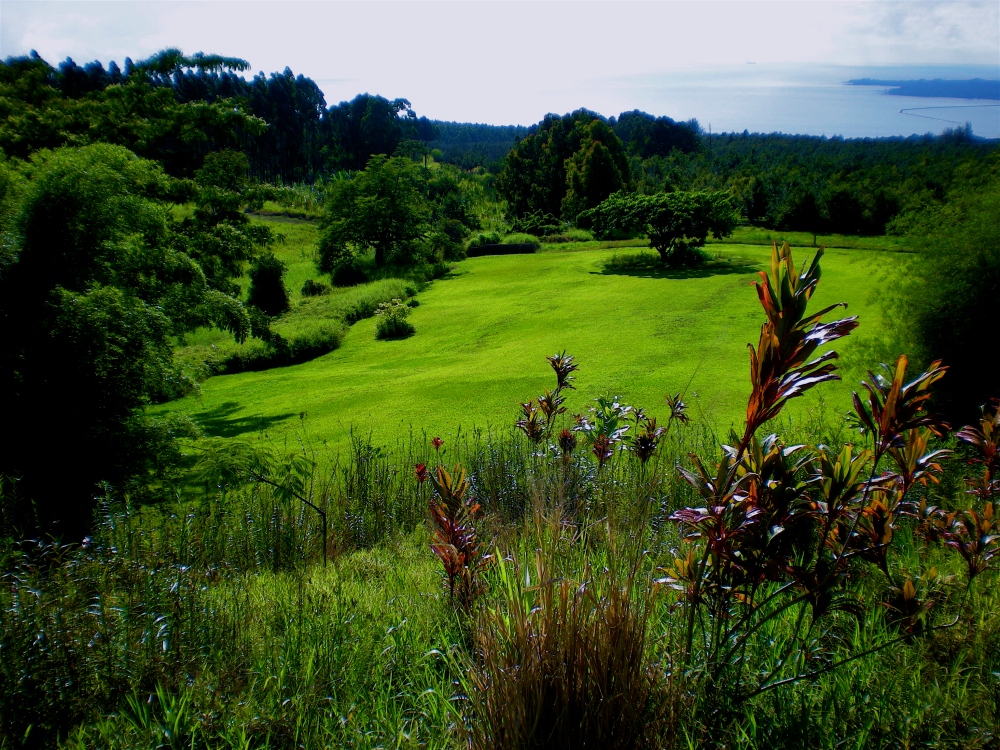

My two younger brothers live in Hilo, a town on the east coast of the Island, about an hour south of Waipiʻo, which in many ways remains the same as it was in the Fifties. There are no good hotels, no good beaches, but there is an old theatre, the Palace, which has been restored and given life by my brother R. and his wife, Q., and which has resumed its place as the center of the community, where one may see everything from a local talent show to a concert by the Kamuela Philharmonic Orchestra. There is also a very good green market on Saturday, with unfamiliar fruits and vegetables among the passionfruit, papaya, white pineapple, starfruit, orchids, anthurium, and mangos, grown in small gardens by local Japanese, Filipino and more recently- arrived Cambodian farmers. A hula contest called the Merrie Monarch Festival is held each spring in Hilo, in which dozens of troupes representing different hula schools, or halau, from all the Islands and the mainland compete for prizes. I am always a little depressed by it — too much make-up, too much synchronized enthusiasm, not enough wildness or even spontaneity — but I also understand that it is impossible for hula to have retained its original meaning (human sacrifice, the consumption of small dogs, and the marriage of brothers and sisters are also no longer in common practice). It is, however, extremely popular with local people as well as visitors. Great care is taken by the various halau to replicate what is thought to be original choreography, if it can be called that, as well as costumes and the singing of chants. As nothing was written down by the Hawaiians until the missionaries devised a transcription of their language, no records were kept other than oral histories. There are some nineteenth-century engravings made from drawings by the shipsʻ artists who sailed with Cook and Vancouver, as well as other travelers, that give an idea of what was worn by the dancers, but that is all. Certainly the breasts of the women dancers were not covered, and I long for the day when a smiling troupe glides onto the Hilo stage with bare breasts.
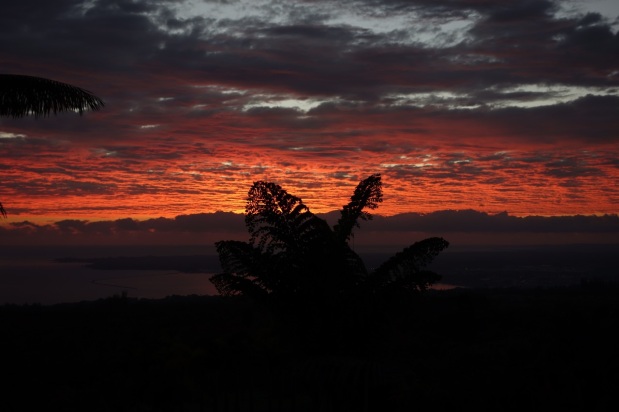
The sight of men and women dancing the hula was particularly disturbing to the Congregationalist ministers and lay workers who arrived in the Islands after 1821. In his journal, the missionary Hiram Bingham described a ceremony he witnessed at the compound of the high chief Boki, where hundreds of male and female dancers had gathered to sing and dance ten days earlier in a celebration that would continue for several months. The dancers, adorned with leaves, flowers, and dog’s teeth anklets, were insufficiently clothed for Bingham, and he condemned the dancers as incitements to lust. A statue of Laka, goddess of the hula, stood at the entrance to Boki’s yard, and the dancers bedecked her image each day, further upsetting Bingham who complained to Boki that the idolatrous image should be removed. Boki, with his customary humor, told Bingham that he was welcome to the statue when the hula ceremonies were complete. Boki agreed, however, that the dancers, if allowed to dance undisturbed each morning and night, would attend the mission school by day. Other men, less encumbered by the Divine, did not hesitate to admire the dance, and particularly the dancers. Mark Twain found Hawaiian women irresistible, even in the shapeless shifts known as Mother Hubbards made for them by the missionaries, later to become the muumuu worn by haoles and Hawaiians alike (he and Robert Louis Stevenson could not resist comparing the skin of Hawaiian women to chocolate or leather).
I saw long-haired, saddle-colored Sandwich Island maidens sitting on the ground in the shade of corner houses, gazing indolently at whatever or whoever happened along . . . I met dusky native women sweeping by, free as the wind, on fleet horses and astraddle, with gaudy riding-sashes streaming like banners behind them . . . I breathed the balmy fragrance of Jessamine, oleander and the Pride of India . . . I moved in the midst of a Summer calm as tranquil as dawn in the Garden of Eden . . . At night they feast and the girls dance the lascivious hula hula—a dance that is said to exhibit the very perfection of education motion of limb and arm, hand, head and body . . . performed by a circle of girls with no raiment on them to speak of . . .
Later that year, Twain was unable to contain himself at the sight of girls swimming naked in the ocean:
At noon I observed a bevy of nude native young ladies bathing in the sea, and went down to look at them . . . when they rose to the surface they only just poked their heads out and showed no disposition to proceed any further in the same direction. I was naturally irritated by such conduct, and therefore I piled their clothes up on a bowlder (sic) in the edge of the sea and sat down on them and kept the wenches in the water until they were pretty well used up.
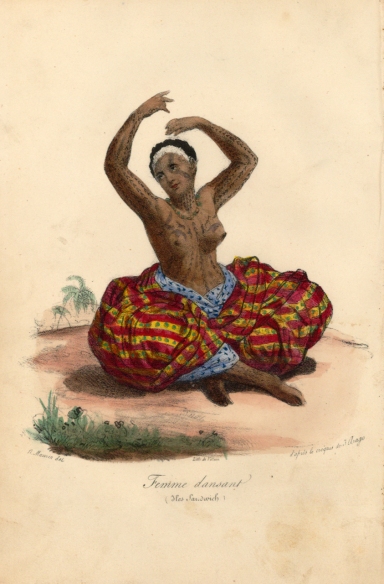
The only dance that Captain George Vancouver did not like was the hula maʻi, performed in celebration of the genitals. Mary Kawena Pukui writes in her book, The Polynesian Family System in Ka’u, Hawai’i:
Every child of chiefly or priestly family had a special name given to his genitals. Meles [songs] were composed for them, but they were not necessarily descriptive of the genitals. In the older days every [hula] school chanted such meles without thought of immodesty or wrong of any sort. The genitalia of the first-born male or female were also given particular physical care in early infancy. This care was therapeutic in the sense that it was intended to guarantee health and efficient coition; and had also its aesthetic aspects, since the sexual act was accepted without shame in those days as being both creative and one of the supreme pleasures.
I have always wanted to see a hula ma’i, but they are rarely performed now. Last summer, at a book festival, the Hawaiian historian, kumu hula, and chanter, Nathan Napoka, was present at a talk that W. gave about his book of hawk photographs, for which Mr. Napoka had written an essay. Mr. Napoka brought with him from Maui a young woman who is his dance student. He himself had been been taught by the late ʻIolani Luahine, a devotee of the hawk god, and one of the last female dancers to perform in the old style.
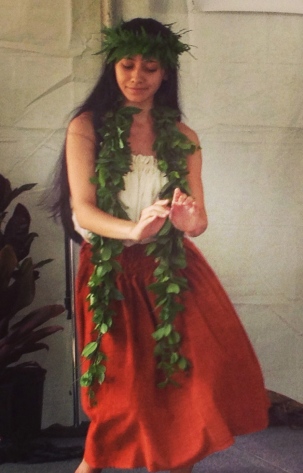 The young woman with Mr. Napoka danced that day in honor of the hawk, and then performed a hula ma’i with all of the wit, joy, elegance, seduction, and sensuousness for which the native Hawaiian was known, and those of us who saw it were astonished and moved, mournfully aware that we might never see a hula ma’i again.
The young woman with Mr. Napoka danced that day in honor of the hawk, and then performed a hula ma’i with all of the wit, joy, elegance, seduction, and sensuousness for which the native Hawaiian was known, and those of us who saw it were astonished and moved, mournfully aware that we might never see a hula ma’i again.
Aloha to this beautiful post. Happy Mark Twain, prudish Captain Vancouver, brilliant Susanna Moore. Oh let us see those dances, those dancers. And yes, we can tell the dancers from the dance. More, please.
LikeLike
What a beautiful blog dear Susanna! I love the photo of you with Locke crossing the river. Your descriptions of places and of the lives of Hawaiians are just marvelous and make me long for your book. SO glad you’re doing this blog, thank you so so much– lots of love from Flora
LikeLike